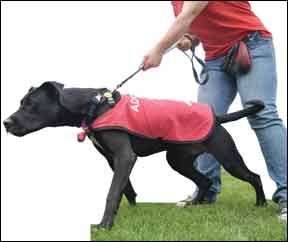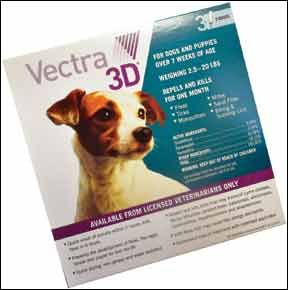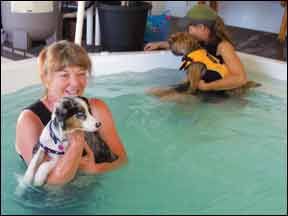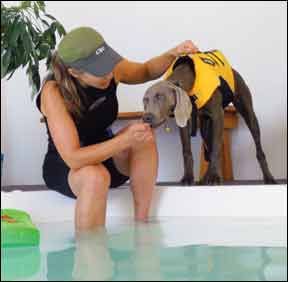The alpha myth is everywhere. Google “alpha dog” on the Internet and you get more than 85 million hits. Really. While not all the sites are about dominating your dog, there are literally millions of resources out there – websites, books, blogs, television shows, veterinarians, trainers and behavior professionals – instructing you to use force and intimidation to overpower your dog into submission. They say that you, the human, must be the alpha. They’re all wrong. Every single one of them.
The erroneous approach to canine social behavior known as dominance theory (two million-plus Google hits) is based on a study of captive zoo wolves conducted in the 1930s and 1940s by Swiss animal behaviorist Rudolph Schenkel, in which the scientist concluded that wolves in a pack fight to gain dominance, and the winner is the alpha wolf.
The Origin’s of the “Alpha” Dog Theory
Schenkel’s observations of captive wolf behavior were erroneously extrapolated to wild wolf behavior, and then to domestic dogs. It was postulated that wolves were in constant competition for higher rank in the hierarchy, and only the aggressive actions of the alpha male and female held the contenders in check. Other behaviorists following Schenkel’s lead also studied captive wolves and confirmed his findings: groups of unrelated wolves brought together in artificial captive environments do, indeed, engage in often-violent and bloody social struggles.
The problem is, that’s not normal wolf behavior. As David Mech stated in the introduction to his study of wild wolves (Mech, 2000), “Attempting to apply information about the behavior of assemblages of unrelated captive wolves to the familial structure of natural packs has resulted in considerable confusion. Such an approach is analogous to trying to draw inferences about human family dynamics by studying humans in refugee camps. The concept of the alpha wolf as a ‘top dog’ ruling a group of similar-aged compatriots (Schenkel 1947; Rabb et al. 1967; Fox 1971a; Zimen 1975, 1982; Lockwood 1979; van Hooff et al. 1987) is particularly misleading.”
What we know now, thanks to Mech and others, is that in the wild, a wolf pack is a family, consisting of a mated pair and their offspring of the past one to three years. Occasionally two or three families may group together. As the offspring mature they disperse from the pack; the only long-term members of the group are the breeding pair. By contrast, in captivity unrelated wolves are forced to live together for many years, creating tension between mature adults that doesn’t happen in a natural, wild pack.
Dominance-Based Training is Disrespectful to Your Dog
But that’s all about wolves anyway, not dogs. How did it happen that dog owners and trainers started thinking all that information (and misinformation) about wolf behavior had anything to do with dogs and dog behavior? The logic went something like, “Dogs are descended from wolves. Wolves live in hierarchical packs in which the aggressive alpha male rules over everyone else. Therefore, humans need to dominate their pet dogs to get them to behave.”
Perhaps the most popular advocate of the alpha dog theory, Cesar Millan, is only the latest in a long line of dominance-based trainers who advocate forceful techniques such as the alpha roll. Much of this style of training has roots in the military – which explains the emphasis on punishment.
As far back as 1906, Colonel Konrad Most was using heavy-handed techniques to train dogs in the German army, then police and service dogs. He was joined by William Koehler after the end of World War II.
Koehler also initially trained dogs for the military prior to his civilian dog-training career, and his writings advocated techniques that included hanging and helicoptering a dog into submission (into unconsciousness, if necessary). For example, to stop a dog from digging, Koehler suggested filling the hole with water and submerging the dog’s head in the water-filed hole until he was nearly drowned.
Fast-forward several years to 1978 and the emergence of the Monks of New Skete as the new model for dog training, asserting a philosophy that “understanding is the key to communication, compassion, and communion” with your dog. Sounds great, yes? The Monks were considered cutting edge at the time – but contrary to their benevolent image, they were in fact responsible for the widespread popularization of the “Alpha-Wolf Roll-Over” (now shortened to the alpha roll). Reviewing the early observations of captive wolves, the Monks concluded that the alpha roll is a useful tool for demonstrating one’s authority over a dog. Unfortunately, this is a complete and utter misinterpretation of the submissive roll-over that is voluntarily offered by less assertive dogs, not forcibly commanded by stronger ones.
The Monks also advocated the frequent use of other physical punishments such as the scruff shake (grab both sides of the dog’s face and shake, lifting the dog off the ground) and cuffing under the dog’s chin with an open hand several times, hard enough to cause the dog to yelp.
While professing that “training dogs is about building a relationship that is based on respect and love and understanding,” even their most recent book, Divine Canine: The Monks’ Way to a Happy, Obedient Dog (2007), is still heavy on outdated, erroneous dominance theory. Immediately following their suggestion that “a kindly, gentle look tells the dog she is loved and accepted,” they say “But it is just as vital to communicate a stern reaction to bad behavior. A piercing, sustained stare into a dog’s eyes tells her who’s in charge; it establishes the proper hierarchy of dominance between person and pet.” (It’s also a great way to unwittingly elicit a strong aggressive response if you choose the wrong dog as the subject for your piercing, sustained stare.)
Despite the strong emergence of positive reinforcement-based training in the last 20 years, the Monks don’t seem to have grasped that the “respect” part needs to go both ways for a truly compassionate communion with your dog. Perhaps one of these days . . .
The Birth of Positive-Reinforcement Training
Just when it seemed that dog training had completely stagnated in turn-of-the-century military-style dominance-theory training, marine mammal trainer Karen Pryor wrote her seminal book, Don’t Shoot the Dog. Published in 1985, this small, unassuming volume was intended as a self-help book for human behavior. The author never dreamed that her modest book, paired with a small plastic box that made a clicking sound, would launch a massive paradigm shift in the world of dog training and behavior. But it did.

Forward progress was slow until 1993, when veterinary behaviorist Dr. Ian Dunbar founded the Association of Pet Dog Trainers. Dunbar’s vision of a forum for trainer education and networking has developed into an organization that now boasts nearly 6,000 members worldwide. While membership in the APDT is not restricted to positive reinforcement-based trainers, included in its guiding principles is this statement:
“We promote the use of reward-based training methods, thereby minimizing the use of aversive techniques.”
The establishment of this forum facilitated the rapid spread of information in the dog training world, enhanced by the creation of an online discussion list where members could compare notes and offer support for a scientific and dog-friendly approach to training.
Things were starting to look quite rosy for our dogs. The positive market literally mushroomed with books and videos from dozens of quality training and behavior professionals, including Jean Donaldson, Dr. Patricia McConnell, Dr. Karen Overall, Suzanne Hetts, and others. With advances in positive training and an increasingly educated dog training profession embracing the science of behavior and learning and passing good information on to their clients, pain-causing, abusive methods such as the alpha roll, scruff shake, hanging, drowning, and cuffing appeared to be headed the way of the passenger pigeon.
A Step-Backward for Positive-Reinforcement Training Techniques
Then, in the fall of 2004, the National Geographic Channel launched its soon-to-be wildly popular show, “The Dog Whisperer”. Alpha dog theory was back in vogue, with a vengeance. Today, everything from housetraining mistakes to jumping up to counter surfing to all forms of aggression is likely to be attributed to alpha dog theory by followers of the alpha-resurgence.
“But,” some will argue, “look at all the dogs who have been successfully trained throughout the past century using the dominance model. Those trainers can’t be all wrong.”
In fact, harsh force-based methods (in technical parlance, “positive punishment”) are a piece of operant conditioning, and as the decades have proven, those methods can work. They are especially good at shutting down behaviors – convincing a dog that it’s not safe to do anything unless instructed to do something. And yes, that works with some dogs. With others, not so much.
My own personal, unscientific theory is that dog personalities lie on a continuum from very soft to very tough. Harsh, old-fashioned dominance-theory methods can effectively suppress behaviors without obvious fallout (although there is always behavioral fallout) with dogs nearest the center of the personality continuum – those who are resilient enough to withstand the punishment, but not so tough and assertive that they fight back. Under dominance theory, when a dog fights back, you must fight back harder until he submits, in order to assert yourself as the pack leader, or alpha.
Problem is, sometimes they don’t submit, and the level of violence escalates. Or they submit for the moment, but may erupt aggressively again the next time a human does something violent and inappropriate to them. Under dominance-theory training, those dogs are often deemed incorrigible, not suitable for the work they’re being trained for nor safe as a family companion, and sentenced to death. Had they never been treated inappropriately, many might have been perfectly fine.
At the opposite end of the spectrum, a very “soft” dog can be easily psychologically damaged by one enthusiastic inappropriate assertion of rank by a heavy-handed dominance trainer. This dog quickly shuts down – fearful and mistrusting of the humans in his world who are unpredictably and unfairly violent.
Most crossover trainers (those who used to train with old-fashioned methods and now are proud to promote positive reinforcement-based training) will tell you they successfully trained lots of dogs the old way. They loved their dogs and their dogs loved them.
I’m a crossover trainer and I know that’s true. I also would dearly love to be able to go back and redo all of that training, to be able to have an even better relationship with those dogs, to give them a less stressful life – one filled with even more joy than the one we shared together.
We Aren’t Dogs, and Our Dogs Know It
Finally, the very presumption that our dogs would even consider we humans to be members of their canine pack is simply ludicrous. They know how impossibly inept we are, for the most part, at reading and understanding the subtleties of canine body language. We are equally inept, if not even more so, at trying to mimic those subtleties. Any attempts on our part to somehow insert ourselves into their social structure and communicate meaningfully with them in this manner are simply doomed to failure. It’s about time we gave up trying to be dogs in a dog pack and accepted that we are humans co-existing with another species – and that we’re most successful doing so when we co-exist peacefully.
The fact is, successful social groups work because of voluntary deference, not because of aggressively enforced dominance. The whole point of social body language rituals is to avoid conflict and confrontation, not to cause it. Watch any group of dogs interacting. Time and time again you’ll see dogs deferring to each other. It’s not even always the same dog deferring:
Dog B: Hey, I’d really like to go first. Dog A: “By all means, be my guest.” Dog B passes down the narrow hallway.
Dog A: “I’d really like to have that bone.” Dog B: “Oh sure – I didn’t feel like chewing right now anyway.” Dog A gets the bone.
Social hierarchies do exist in groups of domesticated dogs and in many other species, including humans, and hierarchy can be fluid. As described above, one dog may be more assertive in one encounter, and more deferent in the next, depending on what’s at stake, and how strongly each dog feels about the outcome. There are a myriad of subtleties about how those hierarchies work, and how the members of a social group communicate – in any species.
Today, educated trainers are aware that canine-human interactions are not driven by social rank, but rather by reinforcement. Behaviors that are reinforced repeat and strengthen. If your dog repeats an inappropriate behavior such as counter surfing or getting on the sofa, it’s not because he’s trying to take over the world; it’s just because he’s been reinforced by finding food on the counter, or by being comfortable on the sofa. He’s a scavenger and an opportunist, and the goods are there for the taking. Figure out how to prevent him from being reinforced for the behaviors you don’t want, and reinforce him liberally for the ones you do, and you’re well on your way to having the relationship of mutual love, respect, communication, and communion that we all want to have with our dogs.
Pat Miller, CBCC-KA, CPDT-KA, is WDJ’s Training Editor. Author of numerous books on positive dog training, she lives in Fairplay, Maryland, site of her Peaceable Paws training center, where she offers dog training classes and courses for trainers.






















